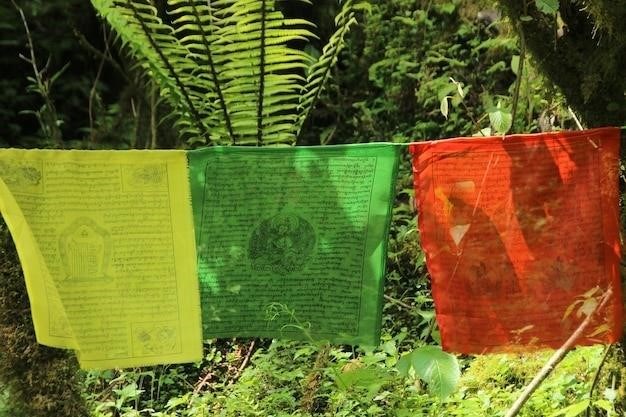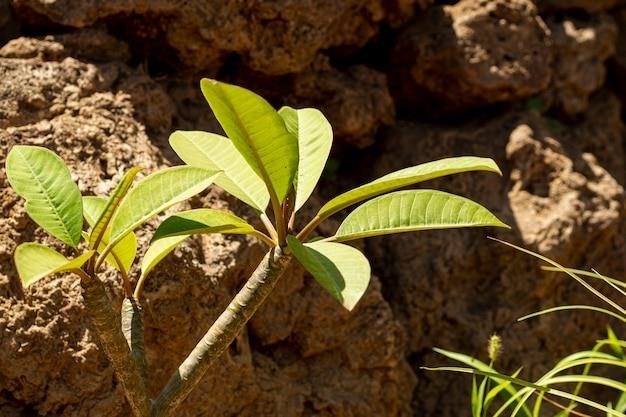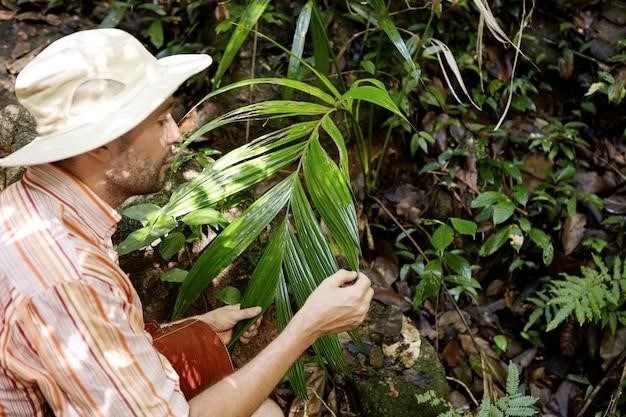Florida Tree Identification⁚ A Comprehensive Guide
This guide aids in identifying Florida’s diverse tree species‚ encompassing both native and naturalized varieties. Key characteristics like leaves‚ bark‚ flowers‚ and fruit are crucial for identification‚ alongside geographic location. Utilize online resources‚ field guides‚ and apps for assistance.
Florida boasts an incredibly rich tapestry of tree species‚ a botanical wonderland shaped by its unique subtropical and tropical climates. From the towering majesty of the longleaf pine‚ with its characteristic long needles and cylindrical cones‚ to the iconic cabbage palm‚ the state tree‚ Florida’s forests are teeming with life. The diverse habitats‚ ranging from coastal mangroves to inland swamps and pine flatwoods‚ support a vast array of tree species. These habitats influence the types of trees found‚ creating distinct ecological zones. Identifying these trees requires understanding their adaptations to these specific environments. This guide will introduce you to some of the most common and easily recognizable species‚ highlighting key features to aid in accurate identification. Whether you’re a seasoned botanist or a curious nature enthusiast‚ this guide provides a solid foundation for exploring Florida’s arboreal diversity. Remember to always consult multiple resources for confirmation‚ as many species share similar characteristics. Enjoy your journey into the fascinating world of Florida’s trees!
Key Characteristics for Identification⁚ Leaves‚ Bark‚ Flowers‚ and Fruit
Accurate tree identification hinges on careful observation of several key features. Leaf shape‚ size‚ arrangement‚ and texture are fundamental. Note whether leaves are simple (single blade) or compound (multiple leaflets)‚ their margins (smooth‚ toothed‚ lobed)‚ and venation patterns. Bark texture‚ color‚ and pattern provide valuable clues; is it smooth‚ rough‚ furrowed‚ scaly‚ or peeling? Flower characteristics—color‚ shape‚ size‚ and arrangement—are crucial‚ especially for flowering trees. Fruit type (berry‚ drupe‚ nut‚ cone‚ etc.)‚ shape‚ size‚ color‚ and ripening time are equally important distinguishing traits. Consider the overall tree form⁚ is it pyramidal‚ rounded‚ weeping‚ or irregular? Combining these observations systematically will significantly increase your success in identifying Florida’s diverse tree species. Remember that variations exist within species; therefore‚ it’s essential to consider multiple characteristics before making a definitive identification.
Utilizing Geographic Location for Narrowing Down Possibilities
Geographic location significantly refines your search when identifying Florida trees. South Florida’s tropical climate supports species absent in the northern‚ more temperate regions. Coastal areas host unique species adapted to saline conditions‚ while inland habitats feature different flora. Elevation plays a role; higher elevations may support species not found in lowlands. Understanding the specific ecosystem – whether it’s a swamp‚ dry scrub‚ pine flatwoods‚ hardwood hammock‚ or mangrove forest – significantly limits the possibilities. For instance‚ mangroves are primarily coastal‚ while longleaf pines thrive in drier‚ sandy areas. Consulting range maps in field guides or online resources helps determine which species are even possible in a given location. This geographical pre-screening dramatically reduces the number of species you need to consider when using other identification characteristics‚ saving time and increasing accuracy.
Common Florida Trees⁚ A Visual Guide
A visual guide is invaluable for identifying common Florida trees. Start by observing the overall tree shape – is it tall and slender‚ broad and spreading‚ or something else? Note the bark texture; is it smooth‚ rough‚ scaly‚ or furrowed? Leaf shape is crucial; are they needle-like (pine)‚ broadleaf (oak)‚ palmate (palmetto)‚ or something more unique? Consider leaf arrangement – are they opposite or alternate along the stem? Flower and fruit characteristics are also important for identification. Look for the presence of cones (pine)‚ acorns (oak)‚ berries‚ or other distinguishing fruit. Photographs are essential; many online resources and field guides offer detailed images and descriptions of common Florida trees such as cabbage palms‚ live oaks‚ red maples‚ and various pine species. Comparing your observations to these visual aids will significantly improve your chances of accurate identification. Remember to document your findings with clear pictures.
Native Florida Trees⁚ Identification and Distribution
Identifying native Florida trees requires understanding their distribution patterns. Different species thrive in specific habitats; coastal areas‚ swamps‚ uplands‚ and pine flatwoods all support unique tree communities. For example‚ mangroves are restricted to coastal regions‚ while longleaf pines dominate the sandy flatwoods. Knowing the geographic location of a tree significantly narrows down identification possibilities. Consider the soil type – sandy‚ clay‚ or muck – as this influences which species can grow. Examine the surrounding vegetation; certain tree species often co-occur with specific plants. Consult resources like the Florida Plant Atlas for detailed distribution maps of native trees. These maps indicate where a particular species is likely to be found. Combining this geographic information with visual identification characteristics greatly enhances your ability to accurately identify native Florida trees. Remember that elevation changes and water flow also affect habitat and species distribution.

Identifying Palms and Other Common Florida Plants
Florida boasts a rich diversity beyond its trees‚ including numerous palm species and other common plants. Palm identification often begins with leaf structure – feather-like (pinnate) or fan-like (palmate). Consider the trunk’s characteristics⁚ smooth‚ rough‚ or spiny; single or multiple stems. Fruit and flower types provide additional clues. The cabbage palm‚ Florida’s state tree‚ is easily recognized by its large‚ fan-shaped leaves and tall‚ sturdy trunk. Other common palms include the buccaneer palm (smaller‚ reaching only about 10 feet tall) and various sabal palms. Beyond palms‚ identifying other plants requires observing leaf shape‚ flower color‚ and fruit type. Mangroves‚ crucial to Florida’s coastal ecosystems‚ are identified by their unique root systems⁚ red mangroves have prop roots‚ black mangroves have pneumatophores (air roots)‚ and white mangroves have less conspicuous root systems. Buttonwood trees‚ often found near mangroves‚ have smooth‚ gray bark and oval-shaped leaves. Using a field guide with detailed illustrations and descriptions will aid in accurately identifying these diverse Florida plants.
Using Online Resources and Field Guides
Supplementing hands-on observation with reliable resources significantly enhances Florida tree identification accuracy. The Florida Plant Atlas is an invaluable online database‚ meticulously cataloging both native and non-native species. Its comprehensive information‚ including detailed descriptions and photographs‚ allows for precise comparisons. Many websites offer interactive identification tools; inputting known characteristics (leaf shape‚ bark texture‚ flower color) narrows down possibilities. Remember to critically evaluate online sources; ensure credibility by checking author credentials and referencing reputable institutions. Well-regarded field guides provide another crucial resource. Look for guides specifically focused on Florida flora; these offer detailed species descriptions‚ high-quality photographs‚ and range maps‚ simplifying the identification process. These guides often employ dichotomous keys‚ structured series of questions leading to species identification. When using any resource‚ pay close attention to details like leaf arrangement (alternate‚ opposite‚ whorled) and fruit type (berry‚ drupe‚ nut). Combining online resources with a thorough field guide provides a robust approach to identifying Florida’s diverse trees.
Tree Identification Tools and Apps
Modern technology offers convenient tools for Florida tree identification. Several smartphone applications leverage image recognition to identify plant species. These apps typically require a clear photograph of the tree’s leaves‚ bark‚ or flowers. The app then analyzes the image‚ comparing it to a vast database to provide potential matches. Accuracy varies depending on image quality and clarity. While convenient‚ remember these apps should be used as a starting point‚ not definitive identification. Always cross-reference app results with other reliable sources like field guides or online databases. Some apps provide additional information beyond simple identification‚ such as species distribution maps‚ flowering periods‚ and ecological significance. This supplementary information proves invaluable for learning more about the identified tree. Beyond image recognition‚ certain websites offer interactive identification keys. These web-based tools guide users through a series of questions about tree characteristics‚ ultimately leading to a species identification. The accuracy of these tools depends on the comprehensiveness of the database and the user’s ability to accurately assess the tree’s traits. Remember that no single tool provides foolproof identification; combining multiple approaches for verification is crucial for reliable results.
Florida’s Unique Mangrove Species⁚ Identification Guide
Florida boasts three unique mangrove species⁚ red‚ black‚ and white mangroves. Distinguishing them requires careful observation of several key features. Red mangroves (Rhizophora mangle) are easily recognized by their distinctive prop roots‚ arching down from the branches into the water. These roots provide stability in the often-shifting sediment. Their leaves are elliptical and a dark‚ glossy green. Black mangroves (Avicennia germinans) possess pneumatophores‚ pencil-like aerial roots that emerge from the mud. These specialized roots allow for oxygen uptake in the oxygen-poor soil. Black mangrove leaves are also elliptical but are thicker and leathery than those of red mangroves. White mangroves (Laguncularia racemosa) are more tree-like in appearance‚ lacking the dramatic prop roots or pneumatophores of their relatives. Their leaves are oval-shaped with a lighter green hue and have noticeable salt glands on their undersides. These glands help excrete excess salt absorbed from the saline environment. Observing these key differences—root systems‚ leaf shape‚ color‚ and texture—allows for accurate identification of these vital coastal trees. Remember that mangrove species often grow intermingled‚ making careful observation and comparison essential for accurate identification.
Identifying Pine Species in Florida
Florida’s pine forests are home to several distinct species‚ each with unique identifying characteristics. The longleaf pine (Pinus palustris)‚ easily recognized by its exceptionally long needles (over a foot long) and distinctive cylindrical cones‚ is a dominant species in many areas. Its bark is deeply furrowed and reddish-brown in mature trees. Shortleaf pine (Pinus echinata)‚ in contrast‚ has shorter needles and smaller cones. Its bark is also reddish-brown but less deeply furrowed than the longleaf pine. The spruce pine (Pinus glabra) is identifiable by its silvery-gray bark‚ which sets it apart from other Florida pines. Its needles are relatively short and its cones are small and prickly. Sand pine (Pinus clausa) thrives in sandy soils and is characterized by its short‚ twisted needles and small‚ serotinous cones (cones that only open after a fire). Distinguishing between these pines requires careful observation of needle length‚ cone size and shape‚ and bark characteristics. Mature trees provide more distinctive bark features than younger specimens. Using a field guide with detailed images and descriptions will significantly aid in accurate identification. Consider the geographic location as well‚ as some species exhibit distinct ranges within the state.
Recognizing Poisonous Trees in Florida

While Florida boasts a rich diversity of trees‚ some pose a significant health risk due to their poisonous nature. Foremost among these is the manchineel tree (Hippomane mancinella)‚ notorious for its extremely toxic sap. Contact with any part of this tree – leaves‚ bark‚ fruit‚ or even its milky sap – can cause severe skin irritation‚ blistering‚ and intense eye pain. Inhalation of smoke from burning manchineel wood can also lead to respiratory distress. The manchineel is typically found in coastal areas‚ particularly in South Florida. Another poisonous tree to be cautious of is poisonwood (Metopium toxiferum). Its sap causes a severe allergic reaction in many people‚ resulting in painful skin rashes and blisters. Symptoms can range from mild discomfort to severe reactions requiring medical attention. Poisonwood is prevalent in South Florida’s hardwood hammocks and coastal areas. Identifying these trees requires careful attention to detail. The manchineel has small‚ apple-like fruits and smooth bark‚ while poisonwood displays trifoliate leaves (three leaflets per leaf). Always maintain a safe distance from any tree that you suspect might be poisonous‚ and avoid touching any unfamiliar plants. If contact occurs‚ wash the affected area thoroughly with soap and water. Consult a medical professional if symptoms develop.
Conservation and Importance of Florida’s Trees
Florida’s diverse tree populations play a vital role in the state’s ecological balance and overall well-being. These trees are crucial for maintaining air and water quality‚ providing habitats for numerous wildlife species‚ and supporting biodiversity. The intricate root systems of many Florida trees help prevent soil erosion and stabilize shorelines‚ enhancing resilience against storm impacts. Furthermore‚ they contribute significantly to the state’s economy through timber production and tourism related to the beauty of Florida’s natural landscapes. However‚ various threats endanger Florida’s trees. Habitat loss due to urbanization and development is a major concern‚ along with invasive species that outcompete native flora. Climate change poses additional risks‚ including increased frequency and intensity of storms‚ rising sea levels‚ and changes in rainfall patterns. Conservation efforts are crucial to protecting these essential resources. This involves responsible land management practices‚ protecting existing forests and wetlands‚ and promoting reforestation projects. Supporting organizations dedicated to preserving Florida’s natural environment is also vital. By understanding the importance of Florida’s trees and actively participating in conservation initiatives‚ we can help ensure the long-term health and sustainability of these valuable ecosystems. Educating ourselves about native species and their ecological roles is a critical first step.
